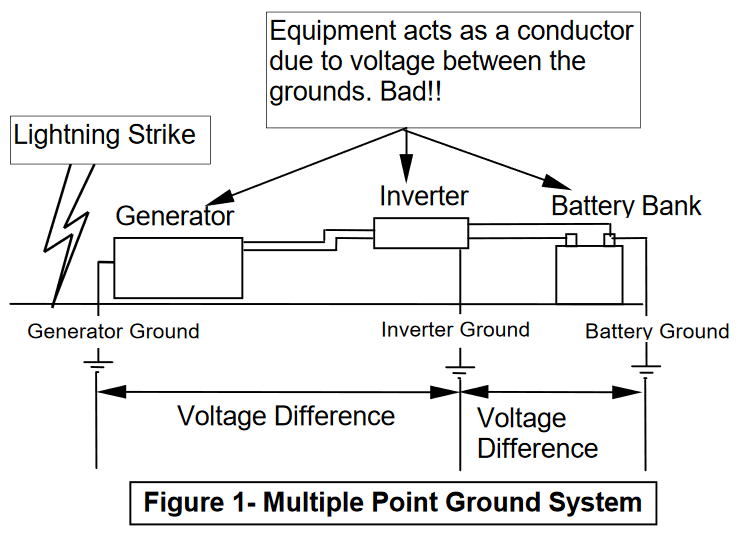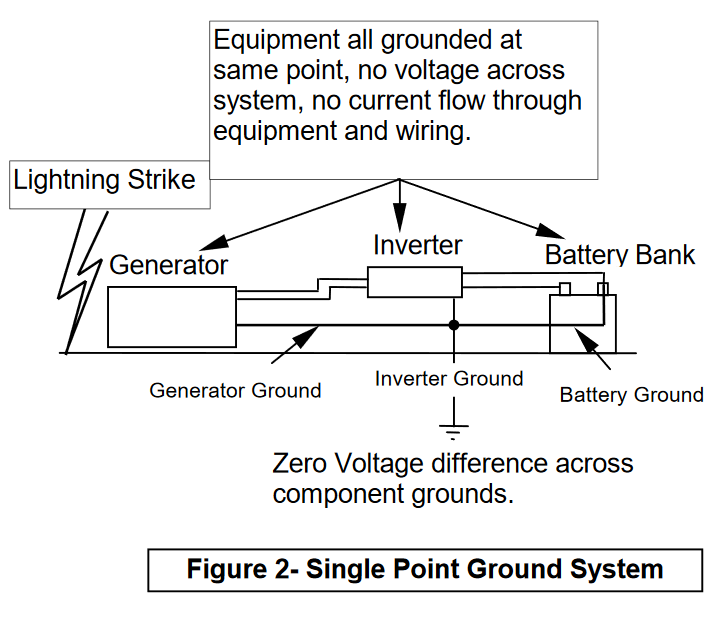 Loading... Please wait...
Loading... Please wait...Products
- DC Appliances
- Solar Refrigerators and Freezers
- Solar Panel Kits
- Solar Panels
- Solar Generators
- Inverters
- Inverter Monitoring
- Inverter Accessories
- Balance of Systems
- Racking and Mounting
- Rails
- Flashings
- Splice Kits
- Stopper Sleeves
- Conduit Mounts
- Attachments
- Brace Assembly
- Base Mount
- Brackets
- Bolts
- Clamps
- Caps
- L-Feet
- Washers
- Skirt
- Lugs
- Tilt Legs
- Hooks
- Stand-Offs
- Ballast Bay
- Top of Pole Mount
- Side of Pole Mount
- Flush Mount Kits
- Ground Mount Kits
- Roof Mount Kits
- Hardware Packages
- Wire Management
- Batteries
- Battery Accessories
- Charge Controllers
- Tools and Supplies
- View All Products
Solaris Blog - Solar Array Grounding
Grounding Techniques to Prevent Inverter Damage
Posted by Brandi Casey on 20th Apr 2017

Although many inverters come with integrated grounding and
arc fault protection, proper care to ensure complete grounding is necessary to
ensure that your inverter will not be overcharged from a power outage and other
outside forces. To find out more about grounding, looking up the authority to
full grounding techniques for your electrical system and specific environment,
the NEC. If an electoral system has components that are grounded at different
points, large voltage differences will be present between these points during a
lightning strike. If the voltage appears between the AC and DC side of the
invterter, it will fail. The average designed withstand voltage of solar
inverters is 1750 volts between AC and ground and 500 volts between DC and
ground.

Your first step to grounding your inverter is to ensure that
all electrical components are grounded at the same location. This will ensure
that there is no voltage potential between the rounds in the system, and no
current flow through the system. In addition, keeping all equipment involved in
the system physically located closely to one another reduces the potential of
an over voltage taking place. This is referred to as single point grounding. If
single point grounding is not achievable due to your site requirements, consult
either the manufacturer of the inverter, a mater electrician, or the installation
guide for your individual inverter. Oftentimes, inverter manufacturers will
provide best practices to their systems.

Even in environments that are not known to have many thunder storms, it is important to practice proper grounding. Other environmental factors can cause power outages if the system is not properly grounded. Damage do your inverter may also spread out to your system if proper system grounding is not in place. Solar panels may be damaged by a lightning strike if they are not properly grounded to the racking array. Manufacturers such as IronRidge and SnapNrack include grounding lugs that work for just such an occasion. IronRidge’s new UFO series includes integrated grounding without any additional components. This double grounding will ensure that even if something were to go wrong with the grounding at the inverter level, your solar panels will remain safe. SnapNrack uses grounding lugs that are installed throughout each string of the system to act as a protector for each panel in that string.
Regardless of best practices, it is important to get an overview of your system components and understand how they work with one another, and the proper wiring is always used between the components. All information for proper cabling can be found in the installation guides from both the solar panel manufacturer and the inverter. Sizing your inverter to your systems energy needs will also ensure that overvoltage to the inverter does not occur from your solar panels to the inverter. Many inverter manufacturers such as SolarEdge and Fronius have sizing tools to ensure that you pick the best inverter for your system. Even with microinverters, it is important that the maximum output of each solar panels is taken into consideration for which microinverter will be the best for your panel, sizing tools for microinverter sizing can be found on Enphase’s website.



